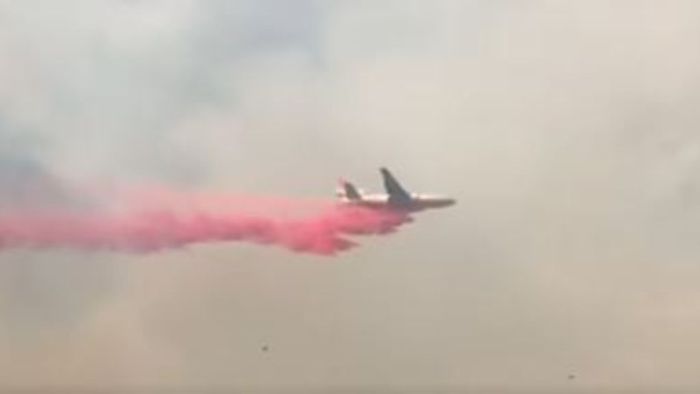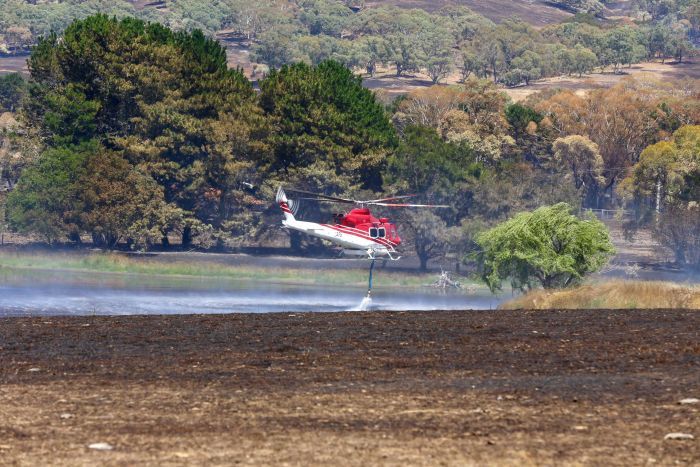Meet the people behind the helicopters and planes which helped control the Tarago and Sutton fires
Updated
Aerial attack teams have played a critical role curbing the spread of two fast-moving grassfires around the ACT region over the past four days.
More than 3,400 hectares of land was burnt during a serious grassfire at Tarago that began on Tuesday and saw one home and a number of sheds and cars destroyed.
Another blaze, this time at Sutton near the ACT border, caused havoc on Wednesday, burning through 523 hectares.
In response to the fires, two large air tankers from Richmond in Sydney, the Southern Belle and Thor, were flown to the ACT to join the attack from the skies.
Between them, the very large air tankers dropped 60,000-litre loads each mission.
"This week was the first time that we have used the very large air tankers and the large air tankers together in tandem, and it has proved very effective," RFS incident manager Tim Carroll said.
Smaller aircraft helped fight fires
But the work of a number of smaller, fast-moving aircraft is often overlooked, according to some pilots.
New Zealand-based pilot Nathan Payne was one of a handful attacking the raging Tarago fire from above.
"It turned into a very big fire, very quick," he said.
"There were a few different types of fires in the same one, so aircraft were really needed on that one and definitely stopped it from making more damage than what it's actually done."
His helicopter, Helitak 475, can bucket up to one tonne of water, and it has dropped 240 loads over the last four days.
"I can get right down. Sometimes my drops are only a couple of metres off the ground. Sometimes they are 50-100 feet up to get a bit more spread pattern," Mr Payne said.
"Sometimes we do it away for the grassfire to run into, or sometimes we will drop it directly on the fire to slow it down."
New Zealand engineer Bernie Wainscott worked through the night maintaining the helicopter to ensure Mr Payne could resume aerial firefighting during daylight hours.
"The biggest problems are probably dirt and smoke, they tend to clog up engines," he said.
"Blades get dirty, tail rudders get dirty and [it] makes things inefficient."
Dangerous job for pilots
The Helitak 475 was among fleet aircraft fighting blazes north of Canberra.
The air team also included five fixed-wing aircraft, two small air tractors from Goulburn and an Elvis or Erickson air-crane from Victoria.
The fleet dropped more than 400 tonnes of fire retardant water and foam on Tuesday alone.
"On the long days the heat and the sun, it all gets to you, and the smoke, it all gets to you at the end of the day," Mr Payne said.
There are plenty of hazards to dodge, with another pilot working on the Sutton fire clipping powerlines this week.
"It is a numbers game really," Mr Payne said.
"It is surprising it doesn't happen more often with the amount of wire that is out there, and that's why we have to slow down and take our time."
With worsening fire conditions predicted for the weekend, the pilots and their support teams remain on standby at the Hume Heli Base in the ACT.
Topics: fires, tarago-2580, nsw, sutton-2620, act
First posted












